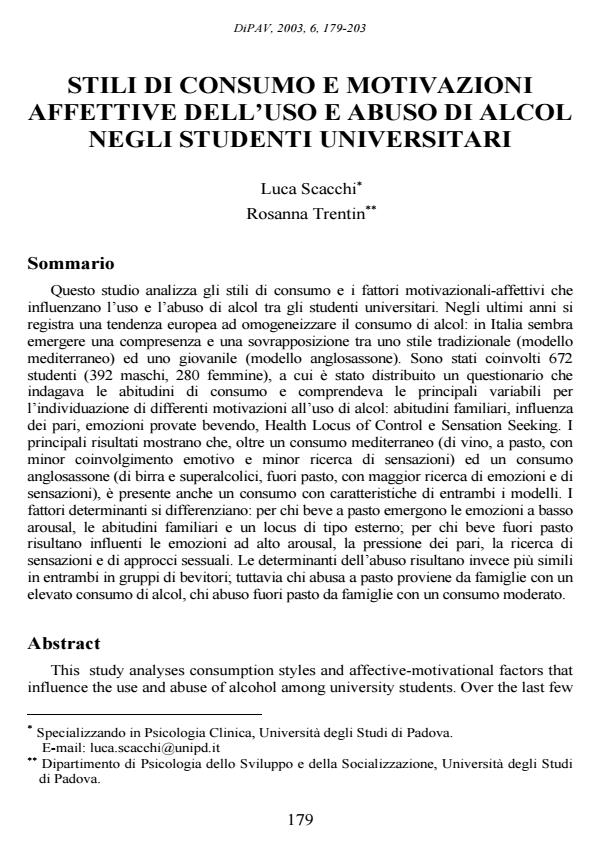Stili di consumo e motivazioni affettive dell'uso e abuso di alcol negli studenti universitari
Titolo Rivista DiPAV - QUADERNI
Autori/Curatori Luca Scacchi, Rosanna Trentin
Anno di pubblicazione 2006 Fascicolo 2003/6 Lingua Italiano
Numero pagine 25 P. Dimensione file 226 KB
DOI
Il DOI è il codice a barre della proprietà intellettuale: per saperne di più
clicca qui
Qui sotto puoi vedere in anteprima la prima pagina di questo articolo.
Se questo articolo ti interessa, lo puoi acquistare (e scaricare in formato pdf) seguendo le facili indicazioni per acquistare il download credit. Acquista Download Credits per scaricare questo Articolo in formato PDF

FrancoAngeli è membro della Publishers International Linking Association, Inc (PILA)associazione indipendente e non profit per facilitare (attraverso i servizi tecnologici implementati da CrossRef.org) l’accesso degli studiosi ai contenuti digitali nelle pubblicazioni professionali e scientifiche
This study analyses consumption styles and affective-motivational factors that influence the use and abuse of alcohol among university students. Over the last few years a European trend to homogenize the consumption of alcohol has been recorded: in Italy there seems to emerge the presence and overlapping of a traditional (Mediterranean model) and a juvenile (Anglo-Saxon model) style. Six hundred and seventy-two students (392 males and 280 females) participated in the research. They were handed a questionnaire which investigated consumption habits and comprised the main variables to determine the different motivations underlying the use of alcohol: family habits, peer influence, emotions connected to drinking, Health Locus of Control and Sensation Seeking. Main results show the presence of Mediterranean consumption (wine with meals, with less emo-tional involvement and sensation seeking), Anglo-Saxon consumption (beer and spirits between meals, with greater emotion and sensation seeking), but also of consumption with features from both models. The factors un-derlying alcohol consumption are differentiated: for individuals who drink with their meals low arousal emotions, family habits and external locus of control emerge; whereas those who drink between meals are influenced by high arousal emotions, peer influence, sensation and sexual approach seek-ing. Determinants of abuse are more similar in both groups of drinkers. However, those who abuse at meals are from families with high alcohol consumption, those who abuse between meals are from families with mod-erate consumption of alcohol.;
Luca Scacchi, Rosanna Trentin, Stili di consumo e motivazioni affettive dell'uso e abuso di alcol negli studenti universitari in "DiPAV - QUADERNI" 6/2003, pp , DOI: